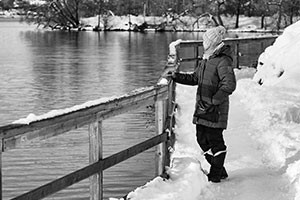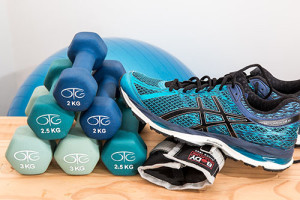The idea that one’s mental health could be tied to the seasons and to sunlight is actually quite old. Written around 300 B.C.E., one of the most important classics of Taoism, the Neijing Suwen(also referred to as The Yellow Emperor’s Classic of Medicine), describes the affects of the seasons on all living things and recommends that during the winter, “desires and mental activity should be kept quiet and subdued.” In 1806, the French physician Philippe Pinel, in his Treatise on Insanity, remarked upon the noticeable decline in the mental health of some of his patients “when the cold weather of December and January set in.” And in 1984, the South African psychiatrist Nicholas Rosenthal, who, after moving to New York, observed a pattern of depression that occurred during the winter months, coined the term Seasonal Affective Disorder.
What is Seasonal Affective Disorder?
 Seasonal Affective Disorder, appropriately referred to as SAD, is a type of major depressive disorder that is cyclic—that is, the primary characteristic of this disorder is that the onset and remission occur at specific times of the year. There are two types of the disorder: Spring-onset SAD and Fall-onset SAD. The less common Spring-onset SAD begins in the spring and lasts through the summer and goes away during the fall and winter. Fall-onset SAD usually begins in September and lasts through April, peaking in months of December, January and February. Fall-onset SAD is by far the most common form of the disorder and is estimated to affect around 500,000 people in the United States each winter.
Seasonal Affective Disorder, appropriately referred to as SAD, is a type of major depressive disorder that is cyclic—that is, the primary characteristic of this disorder is that the onset and remission occur at specific times of the year. There are two types of the disorder: Spring-onset SAD and Fall-onset SAD. The less common Spring-onset SAD begins in the spring and lasts through the summer and goes away during the fall and winter. Fall-onset SAD usually begins in September and lasts through April, peaking in months of December, January and February. Fall-onset SAD is by far the most common form of the disorder and is estimated to affect around 500,000 people in the United States each winter.
What causes SAD?
While the reasons for the development of Fall-onset SAD in some individuals still remains unclear, research has led to a number of theories with regard to an underlying cause, as well as to why certain populations are more vulnerable to the disorder than others.
- Low light during the winter months. “One of the primary theories as to what causes Fall-onset SAD is that it is related to a drop in the amount of sunlight that people get during the winter months,” says Barb Johnson-Giese, Behavioral Health Coordinator at Door County Medical Center. According to Johnson-Giese, when light hits the retina (the back of the eye), messages are passed to the part of the brain that controls sleep, appetite, sex drive, temperature, mood and activity. If a person is not exposed to enough sunlight during the day, these functions are likely to slow down.
- Low serotonin and high melatonin. There are several brain chemicals involved in SAD, but the two primary culprits are thought to be serotonin and melatonin. Serotonin is a neurotransmitter—a chemical that transmits signals from one nerve cell to another. People with depression generally have lower levels of serotonin, and particularly during the winter months. Melatonin is the hormone that makes us sleep. People with SAD tend to have higher than normal levels of melatonin in the winter. Moreover, when exposed to bright light, high melatonin levels tend to drop to normal.
- Disrupted body clock. Your body clock, also known as your circadian rhythm, is set by your brain according to when the sun rises and sets. One hypothesis is that if you’re prone to SAD, the part of the brain that regulates circadian rhythms doesn’t work correctly. When daylight decreases with the winter months, your body clock slows down as well, leading to fatigue and depression.
Who is affected?
SAD primarily affects people in the higher latitudes—or rather, it affects those living in the northernmost and southernmost reaches of the globe—where daylight hours become, during the winter months, the minority. In fact, SAD is rarely reported in areas of the world near the equator. The onset age for SAD is usually between the ages of 18 and 30, and three out of four people who suffer from SAD are women.
How do I know if I have SAD?
The symptoms of SAD are also the symptoms of major depression. The most commonly reported SAD symptoms include:
- Fatigue
- Persistently sad mood
- Loss of interest in activities
- Sleeping more than usual
- Craving and eating more starches and sweets
- Gaining at least 5 percent of body weight
- Difficulty concentrating
A diagnosis of SAD can be made if the symptoms recur for three consecutive winters and are followed by a complete remission of symptoms in the spring and summer months.
How do I treat SAD?
The most common medical treatments for SAD include:
- Antidepressant medications, which can increase the amount of serotonin in the brain.
- Cognitive behavioral therapy provides the psychological tools that are needed to appropriately cope with the symptoms of SAD. Additionally, cognitive behavioral therapy has been shown to “achieve better long-term outcomes by preventing recurrences in subsequent winters.”
- Phototherapy: Also known as bright light therapy, involves sitting in front of special lamps that provide, like the sun, a full spectrum of light. According to Ms. Johnson-Giese, “Bright light therapy, has been found to be effective in up to 85% of Seasonal Affective Disorder cases.”
- Vitamin D: Vitamin D is produced when your skin comes in contact with sunlight, and a vitamin D deficiency has long been associated with low light conditions that accompany SAD. To combat this deficiency, take 4,000 units of vitamin D3 per day.
Additional treatments for SAD
- Get outside: Johnson-Giese suggests getting fresh air during the day. “Increased exposure to sunlight and fresh air—even if it’s cloudy out—is really important. It really helps to get outside. So, don’t isolate in your house thinking ‘There’s no sun out, and it’s too cold, so it’s not going to be helpful to go outside.’”
 Exercise: Exercise is always an important when trying to combat any type of depressive disorder, and SAD is no different. High-intensity aerobic exercise, like running or biking, releases endorphins—the brain’s “feel-good chemicals.” Additionally, continual low-intensity exercise “spurs the release of proteins called neurotrophic or growth factors, which cause nerves to grow and make new connections,” and improved brain function corresponds to improved overall mood.
Exercise: Exercise is always an important when trying to combat any type of depressive disorder, and SAD is no different. High-intensity aerobic exercise, like running or biking, releases endorphins—the brain’s “feel-good chemicals.” Additionally, continual low-intensity exercise “spurs the release of proteins called neurotrophic or growth factors, which cause nerves to grow and make new connections,” and improved brain function corresponds to improved overall mood.- Yoga and Active Meditation “Active meditation is really useful, especially for individuals that have difficulty being still” says Ms. Johnson-Giese. “Active meditation is meditation that occurs while you do something rhythmic like: walking, dancing or coloring in a coloring book—coloring books for adults have become more popular and are effective.”
- Eating a balanced diet: Your brain needs a constant supply of fuel to keep working, and the quality of that fuel can affect how well it functions. Avoid processed foods, and instead load up on fruits, veggies and whole grains. For increased Omega-3 fatty acids and vitamin B12, which are both good for brain function, eat more fish—especially salmon, tuna and mackerel. Avoid caffeine and alcohol.
- Practice good sleep hygiene: “Good sleep hygiene is important,” says Ms. Johnson-Giese, “People need to make sure that their bedroom is only used for sleep and sex. If they don’t go to bed at a regular time and get up at a regular time, or watch TV in bed, the bedroom can become associated with being awake.”
During the winter months, people who suffer from Seasonal Affective Disorder “tend to isolate,” remarks Ms. Johnson-Giese, “and the more they isolate, the more they get caught up in their own negative thinking— a symptom of depression that self reinforces and becomes a feedback loop that continues to become more negative.” She adds that “behavioral activation, which is having people push themselves—that is, having people fight the desire to stay inside and not do anything, becomes very important. The more that you do, the less depressed you start to feel. And it just positively builds.”
•
A number of options exist if you or a loved one feels as though they are suffering from Seasonal Affective Disorder or depression. To schedule an appointment with Door County Medical Center’s Behavioral Health department please call (920) 746-0510. Additional sources of information include your own Employee Assistance Program, accessed through your employer, or the Community Resources tab on the Door County Library website. If there is a mental health emergency, Ms. Johnson-Giese suggests calling the Suicide/Mental Health Crisis Line at 920-746-2588, texting “HOPELINE” to 741741, which connects you to trained crisis counselors, calling 9-1-1, or going directly to the hospital emergency room